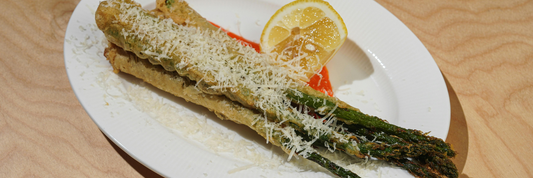In today’s competitive sushi market, small restaurants face a tough challenge: how to price their menu to attract customers without losing profit. Big chains like Genki Sushi and Kura Sushi can play the volume game but independent sushi bars have something more personal: authenticity, flexibility, and story.
That’s where Kimecopak supports you. As a trusted provider of eco-friendly packaging for sushi and F&B brands, we understand that every detail from pricing to presentation shapes how customers perceive your value. Let’s explore how to build a sushi pricing strategy that helps you stand out from big restaurant chains while keeping your business sustainable.
-
How to Start a Ramen Noodle Business: Everything You Need to Know
-
Cost-effective Sushi Packaging for Small Restaurants
-
How Can Sushi Startup Overcome Challenges in a Diverse Sea of Sushi Market?
Understanding Sushi Pricing in Today’s Market

Why Pricing Matters More Than Ever
Pricing defines how your sushi brand is positioned whether it’s affordable comfort or premium dining. In a market flooded with choices, it’s not just about setting prices low; it’s about building value perception.
Common Challenges Small Sushi Restaurants Face
Small restaurants often struggle with:
-
Limited purchasing power – higher ingredient costs per unit
-
Lack of brand recognition – harder to justify premium pricing
-
Tight profit margins – especially when competing with chain promotions
-
Rising operational costs – from rent to delivery apps
How Big Restaurant Chains Set Their Prices

Economies of Scale
Chains benefit from bulk purchasing, allowing them to lower costs without affecting quality.
Data-Driven Decision Making
Large brands use analytics to track customer preferences and adjust prices dynamically across locations.
Strategic Promotions
They use bundles, limited-time offers, and loyalty programs to maintain a steady flow of returning customers.
But here’s the secret: small businesses can apply similar logic without needing a massive budget.
Crafting an Effective Sushi Pricing Strategy
1. Know Your Costs Thoroughly
Break down the full cost per menu item:
-
Ingredients (fish, rice, soy, seaweed, etc.)
-
Labor (chef prep time, plating)
-
Packaging (for dine-in and takeaway)
-
Overheads (utilities, rent, marketing)
Only when you know your total cost can you build a sustainable margin that still feels fair to customers.
2. Study Your Market and Competitors
Benchmark nearby sushi restaurants — note portion sizes, ingredients, and presentation.
Ask: What makes your sushi worth paying more for? Maybe it’s local fish, handcrafted rolls, or eco-friendly packaging that enhances the dining experience.
3. Create Tiered Menu Options
Offer pricing tiers to appeal to different budgets:
-
Value Set: Simple rolls and combos
-
Mid-Range: Signature rolls with premium fillings
-
Premium Experience: Chef’s omakase, seasonal fish, artisanal sauces
This lets you capture more customer segments without undercutting yourself.
4. Highlight Your Value Proposition
Customers don’t just buy sushi; they buy experience.
Use storytelling to connect emotion and quality:
“We source fresh fish daily and use biodegradable sushi trays from Kimecopak to deliver freshness and sustainability in every bite.”
A strong message builds trust and justifies slightly higher prices.

5. Use Psychology-Based Pricing
Subtle pricing tricks make a difference:
-
Avoid round numbers ($12.95 feels cheaper than $13)
-
Place premium items next to standard ones to create perceived value
-
Bundle items (roll + miso soup + drink) to increase average order value
6. Don’t Compete on Price Alone
Undercutting big chains is unsustainable. Instead, focus on:
-
Craftsmanship – handmade rolls, chef’s artistry
-
Experience – cozy ambiance, local ingredients
-
Sustainability – compostable sushi trays, eco takeout cups from Kimecopak
These are values big chains can’t easily replicate.
Balancing Profit and Sustainability

Your pricing strategy should not only attract customers but also reflect your brand values.
Here’s how sustainable packaging adds value:
-
Higher perceived quality – customers associate eco packaging with premium care
-
Reduced waste – aligns with conscious consumers’ expectations
-
Storytelling edge – highlight your green efforts on your menu and online
At Kimecopak, we help sushi brands find that balance — by offering eco-friendly packaging that enhances presentation while staying cost-effective.
Practical Checklist for Sushi Pricing Success
| Step | Key Action | Outcome |
|---|---|---|
| 1 | Analyze full cost per dish | Accurate profit margins |
| 2 | Research competitors | Position pricing effectively |
| 3 | Build tiered menu options | Serve multiple segments |
| 4 | Use value-based messaging | Justify premium pricing |
| 5 | Integrate sustainability | Differentiate your brand |
Conclusion
A smart sushi pricing strategy isn’t about being the cheapest it’s about being valuable. When your customers taste your care, see your presentation, and feel your brand values through sustainable packaging, they’ll choose you over big chains every time.
With Kimecopak’s eco-friendly packaging solutions, you can deliver not just sushi, but an experience that blends taste, design, and environmental responsibility helping your restaurant grow with purpose.
FAQs
1. How can small sushi restaurants compete with large chains on price?
Focus on value-based pricing. Highlight freshness, craftsmanship, and sustainability instead of discounts.
2. What’s the best profit margin for a sushi restaurant?
Aim for 65–70% food cost margin after accounting for ingredients, labor, and packaging.
3. Should I adjust sushi prices for delivery apps?
Yes. Include platform fees in your pricing so your profit margin remains steady.
4. How can eco-friendly packaging improve my pricing strategy?
Sustainable packaging elevates your brand image and lets you justify higher prices through value perception.
5. What’s the best way to communicate my sushi pricing to customers?
Use storytelling on menus and social media. Explain what makes your sushi worth the price from ingredients to eco-friendly presentation.




